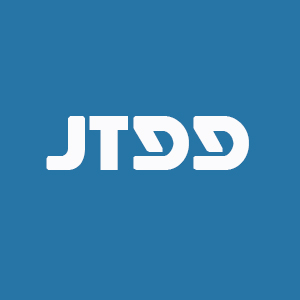REFERENCES
1. Kim A, Scharf K, Senthil M, Solomon N, Garberoglio C, Lum SS. The prevalence of overweight and obesity in a breast clinic population: consideration for weight loss as a therapeutic intervention. Surg Obes Relat Dis 2014;10:348-53.
2. Barone I, Giordano C, Bonofiglio D, Andò S, Catalano S. The weight of obesity in breast cancer progression and metastasis: clinical and molecular perspectives. Semin Cancer Biol 2020;60:274-84.
3. Lee K, Kruper L, Dieli-Conwright CM, Mortimer JE. The impact of obesity on breast cancer diagnosis and treatment. Curr Oncol Rep 2019;21:41.
4. White KK, Park SY, Kolonel LN, Henderson BE, Wilkens LR. Body size and breast cancer risk: the Multiethnic Cohort. Int J Cancer 2012;131:E705-16.
5. Lopez R, Agullo P, Lakshmanaswamy R. Links between obesity, diabetes and ethnic disparities in breast cancer among Hispanic populations. Obes Rev 2013;14:679-91.
6. Society AC. Cancer facts and figures. Atlanta: American Cancer Society, 2013.
8. Picon-Ruiz M, Morata-Tarifa C, Valle-Goffin JJ, Friedman ER, Slingerland JM. Obesity and adverse breast cancer risk and outcome: mechanistic insights and strategies for intervention. CA Cancer J Clin 2017;67:378-97.
9. Benedetto C, Salvagno F, Canuto EM, Gennarelli G. Obesity and female malignancies. Best Pract Res Clin Obstet Gynaecol 2015;29:528-40.
10. Shu X, Wu L, Khankari NK, et al. Breast Cancer Association Consortium. Associations of obesity and circulating insulin and glucose with breast cancer risk: a Mendelian randomization analysis. Int J Epidemiol 2019;48:795-806.
11. Rodriguez-Gil JL, Takita C, Wright J, et al. Inflammatory biomarker C-reactive protein and radiotherapy-induced early adverse skin reactions in patients with breast cancer. Cancer Epidemiol Biomarkers Prev 2014;23:1873-83.
12. Chan DSM, Vieira AR, Aune D, et al. Body mass index and survival in women with breast cancer-systematic literature review and meta-analysis of 82 follow-up studies. Ann Oncol 2014;25:1901-14.
13. Islami F, Goding Sauer A, Miller KD, et al. Proportion and number of cancer cases and deaths attributable to potentially modifiable risk factors in the United States. CA Cancer J Clin 2018;68:31-54.
14. DeSantis C, Ma J, Bryan L, Jemal A. Breast cancer statistics, 2013. CA Cancer J Clin 2014;64:52-62.
15. Curtis E, Quale C, Haggstrom D, Smith-Bindman R. Racial and ethnic differences in breast cancer survival: how much is explained by screening, tumor severity, biology, treatment, comorbidities, and demographics? Cancer 2008;112:171-80.
16. Breast cancer statistics and resources. Available from: https://www.bcrf.org/breast-cancer-statistics-and-resources [Last accessed on 17 Mar 2022].
17. . Breast cancer rates by race and ethnicity. Atlanta: Centers for Disease Control and Prevention; 2014.
18. Yedjou CG, Sims JN, Miele L, et al. Health and racial disparity in breast cancer. Adv Exp Med Biol 2019;1152:31-49.
19. Ogden CL, Carroll MD, Kit BK, Flegal KM. Prevalence of childhood and adult obesity in the United States, 2011-2012. JAMA 2014;311:806-14.
20. Centers for Disease Control and Prevention. Adult obesity facts. Available from: https://www.cdc.gov/obesity/data/adult.html [Last accessed on 17 Mar 2022].
21. Locke AE, Kahali B, Berndt SI, et al. LifeLines Cohort Study, ADIPOGen Consortium, AGEN-BMI Working Group, CARDIOGRAMplusC4D Consortium, CKDGen Consortium, GLGC, ICBP, MAGIC Investigators, MuTHER Consortium, MIGen Consortium, PAGE Consortium, ReproGen Consortium, GENIE Consortium, International Endogene Consortium. Genetic studies of body mass index yield new insights for obesity biology. Nature 2015;518:197-206.
22. Silventoinen K, Jelenkovic A, Sund R, et al. Genetic and environmental effects on body mass index from infancy to the onset of adulthood: an individual-based pooled analysis of 45 twin cohorts participating in the COllaborative project of Development of Anthropometrical measures in Twins (CODATwins) study. Am J Clin Nutr 2016;104:371-9.
23. Bouchard C. Genetics of obesity: what we have learned over decades of research. Obesity (Silver Spring) 2021;29:802-20.
24. Goodarzi MO. Genetics of obesity: what genetic association studies have taught us about the biology of obesity and its complications. Lancet Diabetes Endocrinol 2018;6:223-36.
25. Cheng M, Mei B, Zhou Q, et al. Computational analyses of obesity associated loci generated by genome-wide association studies. PLoS One 2018;13:e0199987.
26. Belsky DW, Moffitt TE, Sugden K, et al. Development and evaluation of a genetic risk score for obesity. Biodemography Soc Biol 2013;59:85-100.
27. Dashti HS, Hivert MF, Levy DE, McCurley JL, Saxena R, Thorndike AN. Polygenic risk score for obesity and the quality, quantity, and timing of workplace food purchases: a secondary analysis from the ChooseWell 365 randomized trial. PLoS Med 2020;17:e1003219.
28. Lambert SA, Abraham G, Inouye M. Towards clinical utility of polygenic risk scores. Hum Mol Genet 2019;28:R133-42.
29. Seral-Cortes M, Sabroso-Lasa S, De Miguel-Etayo P, et al. Development of a Genetic Risk Score to predict the risk of overweight and obesity in European adolescents from the HELENA study. Sci Rep 2021;11:3067.
30. Mozafarizadeh M, Parvizi Omran S, Kordestani Z, Manshadi Dehghan H, Faridazar A, Houshmand M. Association of obesity-related genetic variants (FTO and MC4R) with breast cancer risk: a population-based case-control study in Iran. Iran J Biotechnol 2019;17:e2460.
31. Llanaj E, Pikó P, Nagy K, et al. Applicability of obesity-related SNPs and their effect size measures defined on populations with European ancestry for genetic risk estimation among Roma. Genes (Basel) 2020;11:516.
32. Li J, Wei D, McCrory MA, et al. Human C-reactive protein impedes entry of leptin into the CNS and attenuates its physiological actions in the CNS. Biochem J 2016;473:1215-24.
33. de Toro-Martín J, Guénard F, Bouchard C, Tremblay A, Pérusse L, Vohl MC. The challenge of stratifying obesity: attempts in the Quebec family study. Front Genet 2019;10:994.
34. Asegaonkar SB, Asegaonkar BN, Takalkar UV, Advani S, Thorat AP. C-reactive protein and breast cancer: new insights from old molecule. Int J Breast Cancer 2015;2015:145647.
35. Ebrahimi M, Heidari-Bakavoli AR, Shoeibi S, et al. Association of serum hs-CRP levels with the presence of obesity, diabetes mellitus, and other cardiovascular risk factors. J Clin Lab Anal 2016;30:672-6.
36. Han H, Cho YH, Lee SY, et al. Elevated C-reactive protein level, obesity, and quality of life. J Pak Med Assoc 2019;69:1771-6.
37. Sudhakar M, Silambanan S, Chandran AS, Prabhakaran AA, Ramakrishnan R. C-reactive protein (CRP) and leptin receptor in obesity: binding of monomeric CRP to leptin receptor. Front Immunol 2018;9:1167.
38. Nari F, Jang BN, Kim GR, Park EC, Jang SI. Synergistic effects and sex differences in anthropometric measures of obesity and elevated high-sensitivity C-reactive protein levels. Int J Environ Res Public Health 2020;17:8279.
39. Yudkin JS, Stehouwer CD, Emeis JJ, Coppack SW. C-reactive protein in healthy subjects: associations with obesity, insulin resistance, and endothelial dysfunction: a potential role for cytokines originating from adipose tissue? Arterioscler Thromb Vasc Biol 1999;19:972-8.
40. Salaroli L, Cattafesta M, Molina M, Zandonade E, Bissoli N. Insulin resistance and associated factors: a cross-sectional study of bank employees. Clinics 2017;72:224-30.
41. Kim GR, Choi DW, Nam CM, Jang SI, Park EC. Synergistic association of high-sensitivity C-reactive protein and body mass index with insulin resistance in non-diabetic adults. Sci Rep 2020;10:18417.
42. Heikkilä K, Harris R, Lowe G, et al. Associations of circulating C-reactive protein and interleukin-6 with cancer risk: findings from two prospective cohorts and a meta-analysis. Cancer Causes Control 2009;20:15-26.
43. Hart PC, Rajab IM, Alebraheem M, Potempa LA. C-reactive protein and cancer-diagnostic and therapeutic insights. Front Immunol 2020;11:595835.
44. Markozannes G, Koutsioumpa C, Cividini S, et al. Global assessment of C-reactive protein and health-related outcomes: an umbrella review of evidence from observational studies and Mendelian randomization studies. Eur J Epidemiol 2021;36:11-36.
45. Guo L, Liu S, Zhang S, et al. C-reactive protein and risk of breast cancer: a systematic review and meta-analysis. Sci Rep 2015;5:10508.
46. Gunter MJ, Wang T, Cushman M, et al. Circulating adipokines and inflammatory markers and postmenopausal breast cancer risk. J Natl Cancer Inst 2015;107:djv169.
47. Price TR, Friedenreich CM, Robson PJ, Li H, Brenner DR. High-sensitivity C-reactive protein, hemoglobin A1c and breast cancer risk: a nested case-control study from Alberta’s Tomorrow Project cohort. Cancer Causes Control 2020;31:1057-68.
48. Chan DS, Bandera EV, Greenwood DC, Norat T. Circulating C-reactive protein and breast cancer risk-systematic literature review and meta-analysis of prospective cohort studies. Cancer Epidemiol Biomarkers Prev 2015;24:1439-49.
49. Wu X, Zhang X, Hao Y, Li J. Obesity-related protein biomarkers for predicting breast cancer risk: an overview of systematic reviews. Breast Cancer 2021;28:25-39.
50. Arthur RS, Dannenberg AJ, Rohan TE. The association of prediagnostic circulating levels of cardiometabolic markers, testosterone and sex hormone-binding globulin with risk of breast cancer among normal weight postmenopausal women in the UK Biobank. Int J Cancer 2021;149:42-57.
51. Jung SY, Papp JC, Sobel EM, Pellegrini M, Yu H, Zhang ZF. Genetically predicted C-reactive protein associated with postmenopausal breast cancer risk: interrelation with estrogen and cancer molecular subtypes using mendelian randomization. Front Oncol 2020;10:630994.
52. Hong T, Liu A, Cai D, et al. Preoperative serum C-reactive protein levels and early breast cancer by BMI and menopausal status. Cancer Invest 2013;31:279-85.
53. Wang J, Lee IM, Tworoger SS, et al. Plasma C-reactive protein and risk of breast cancer in two prospective studies and a meta-analysis. Cancer Epidemiol Biomarkers Prev 2015;24:1199-206.
54. Allin KH, Nordestgaard BG, Flyger H, Bojesen SE. Elevated pre-treatment levels of plasma C-reactive protein are associated with poor prognosis after breast cancer: a cohort study. Breast Cancer Res 2011;13:R55.
55. Pierce BL, Ballard-Barbash R, Bernstein L, et al. Elevated biomarkers of inflammation are associated with reduced survival among breast cancer patients. J Clin Oncol 2009;27:3437-44.
56. Shimura T, Shibata M, Gonda K, et al. Prognostic impact of interleukin-6 and C-reactive protein on patients with breast cancer. Oncol Lett 2019;17:5139-46.
57. Gathirua-Mwangi WG, Song Y, Monahan PO, Champion VL, Zollinger TW. Associations of metabolic syndrome and C-reactive protein with mortality from total cancer, obesity-linked cancers and breast cancer among women in NHANES III. Int J Cancer 2018;143:535-42.
58. Nelson SH, Brasky TM, Patterson RE, et al. The association of the C-reactive protein inflammatory biomarker with breast cancer incidence and mortality in the Women’s Health Initiative. Cancer Epidemiol Biomarkers Prev 2017;26:1100-6.
59. Tobias DK, Akinkuolie AO, Chandler PD, et al. Markers of inflammation and incident breast cancer risk in the Women’s Health Study. Am J Epidemiol 2018;187:705-16.
60. Graff M, Fernández-Rhodes L, Liu S, et al. Generalization of adiposity genetic loci to US Hispanic women. Nutr Diabetes 2013;3:e85.
61. Frayling TM, Timpson NJ, Weedon MN, et al. A common variant in the FTO gene is associated with body mass index and predisposes to childhood and adult obesity. Science 2007;316:889-94.
62. Fox CS, Heard-Costa N, Cupples LA, Dupuis J, Vasan RS, Atwood LD. Genome-wide association to body mass index and waist circumference: the Framingham Heart Study 100K project. BMC Med Genet 2007;8 Suppl 1:S18.
63. Hinney A, Nguyen TT, Scherag A, et al. Genome wide association (GWA) study for early onset extreme obesity supports the role of fat mass and obesity associated gene (FTO) variants. PLoS One 2007;2:e1361.
64. Loos RJ, Yeo GS. The bigger picture of FTO: the first GWAS-identified obesity gene. Nat Rev Endocrinol 2014;10:51-61.
65. Liu YJ, Liu XG, Wang L, et al. Genome-wide association scans identified CTNNBL1 as a novel gene for obesity. Hum Mol Genet 2008;17:1803-13.
66. Thorleifsson G, Walters GB, Gudbjartsson DF, et al. Genome-wide association yields new sequence variants at seven loci that associate with measures of obesity. Nat Genet 2009;41:18-24.
67. Willer CJ, Speliotes EK, Loos RJ, et al. Wellcome Trust Case Control Consortium, Genetic Investigation of ANthropometric Traits Consortium. Six new loci associated with body mass index highlight a neuronal influence on body weight regulation. Nat Genet 2009;41:25-34.
68. Meyre D, Delplanque J, Chèvre JC, et al. Genome-wide association study for early-onset and morbid adult obesity identifies three new risk loci in European populations. Nat Genet 2009;41:157-9.
69. Cotsapas C, Speliotes EK, Hatoum IJ, et al. GIANT Consortium. Common body mass index-associated variants confer risk of extreme obesity. Hum Mol Genet 2009;18:3502-7.
70. Lindgren CM, Heid IM, Randall JC, et al. Wellcome Trust Case Control Consortium, Procardis Consortia, Giant Consortium. Genome-wide association scan meta-analysis identifies three Loci influencing adiposity and fat distribution. PLoS Genet 2009;5:e1000508.
71. Heard-Costa NL, Zillikens MC, Monda KL, et al. NRXN3 is a novel locus for waist circumference: a genome-wide association study from the CHARGE Consortium. PLoS Genet 2009;5:e1000539.
72. Johansson A, Marroni F, Hayward C, et al. EUROSPAN Consortium. Linkage and genome-wide association analysis of obesity-related phenotypes: association of weight with the MGAT1 gene. Obesity (Silver Spring) 2010;18:803-8.
73. Liu YJ, Guo YF, Zhang LS, et al. Biological pathway-based genome-wide association analysis identified the vasoactive intestinal peptide (VIP) pathway important for obesity. Obesity (Silver Spring) 2010;18:2339-46.
74. Scherag A, Dina C, Hinney A, et al. Two new Loci for body-weight regulation identified in a joint analysis of genome-wide association studies for early-onset extreme obesity in French and german study groups. PLoS Genet 2010;6:e1000916.
75. Speliotes EK, Willer CJ, Berndt SI, et al. MAGIC. Association analyses of 249,796 individuals reveal 18 new loci associated with body mass index. Nat Genet 2010;42:937-48.
76. Monda KL, Chen GK, Taylor KC, et al. NABEC Consortium, UKBEC Consortium, BioBank Japan Project, AGEN Consortium. A meta-analysis identifies new loci associated with body mass index in individuals of African ancestry. Nat Genet 2013;45:690-6.
77. Macinnis RJ, English DR, Gertig DM, Hopper JL, Giles GG. Body size and composition and risk of postmenopausal breast cancer. Cancer Epidemiol Biomarkers Prev 2004;13:2117-25.
78. Suzuki S, Kojima M, Tokudome S, et al. Obesity/weight gain and breast cancer risk: findings from the Japan collaborative cohort study for the evaluation of cancer risk. J Epidemiol 2013;23:139-45.
79. Renehan AG, Tyson M, Egger M, Heller RF, Zwahlen M. Body-mass index and incidence of cancer: a systematic review and meta-analysis of prospective observational studies. Lancet 2008;371:569-78.
80. Frydenberg H, Thune I, Lofterød T, et al. Pre-diagnostic high-sensitive C-reactive protein and breast cancer risk, recurrence, and survival. Breast Cancer Res Treat 2016;155:345-54.
81. Kolb R, Sutterwala FS, Zhang W. Obesity and cancer: inflammation bridges the two. Curr Opin Pharmacol 2016;29:77-89.
82. Peterson RE, Maes HH, Holmans P, et al. Genetic risk sum score comprised of common polygenic variation is associated with body mass index. Hum Genet 2011;129:221-30.
83. Belsky DW, Moffitt TE, Houts R, et al. Polygenic risk, rapid childhood growth, and the development of obesity: evidence from a 4-decade longitudinal study. Arch Pediatr Adolesc Med 2012;166:515-21.
86. Greten FR, Grivennikov SI. Inflammation and cancer: triggers, mechanisms, and consequences. Immunity 2019;51:27-41.
87. Iyengar NM, Gucalp A, Dannenberg AJ, Hudis CA. Obesity and cancer mechanisms: tumor microenvironment and inflammation. J Clin Oncol 2016;34:4270-6.
88. Mantovani A, Allavena P, Sica A, Balkwill F. Cancer-related inflammation. Nature 2008;454:436-44.
89. Monkkonen T, Debnath J. Inflammatory signaling cascades and autophagy in cancer. Autophagy 2018;14:190-8.
90. Colotta F, Allavena P, Sica A, Garlanda C, Mantovani A. Cancer-related inflammation, the seventh hallmark of cancer: links to genetic instability. Carcinogenesis 2009;30:1073-81.
91. Visser M, Bouter LM, McQuillan GM, Wener MH, Harris TB. Elevated C-reactive protein levels in overweight and obese adults. JAMA 1999;282:2131-5.
92. Babaei Z, Moslemi D, Parsian H, Khafri S, Pouramir M, Mosapour A. Relationship of obesity with serum concentrations of leptin, CRP and IL-6 in breast cancer survivors. J Egypt Natl Canc Inst 2015;27:223-9.
93. Ribaric G, Buchwald JN, McGlennon TW. Diabetes and weight in comparative studies of bariatric surgery vs conventional medical therapy: a systematic review and meta-analysis. Obes Surg 2014;24:437-55.
94. Chang SH, Stoll CR, Song J, Varela JE, Eagon CJ, Colditz GA. The effectiveness and risks of bariatric surgery: an updated systematic review and meta-analysis, 2003-2012. JAMA Surg 2014;149:275-87.
95. Jiralerspong S, Goodwin PJ. Obesity and breast cancer prognosis: evidence, challenges, and opportunities. J Clin Oncol 2016;34:4203-16.
96. Modesitt SC, Hallowell PT, Slack-Davis JK, et al. Women at extreme risk for obesity-related carcinogenesis: baseline endometrial pathology and impact of bariatric surgery on weight, metabolic profiles and quality of life. Gynecol Oncol 2015;138:238-45.
97. Schauer DP, Feigelson HS, Koebnick C, et al. Bariatric surgery and the risk of cancer in a large multisite cohort. Ann Surg 2019;269:95-101.
98. Zhang S, Ikramuddin S, Beckwith HC, Sheka AC, Wirth KM, Blaes AH. The impact of bariatric surgery on breast cancer recurrence: case series and review of literature. Obes Surg 2020;30:780-5.
100. Nuttall FQ. Body mass index: obesity, BMI, and health: a critical review. Nutr Today 2015;50:117-28.
101. Landry A, Docherty P, Ouellette S, Cartier LJ. Causes and outcomes of markedly elevated C-reactive protein levels. Can Fam Physician 2017;63:e316-23.









